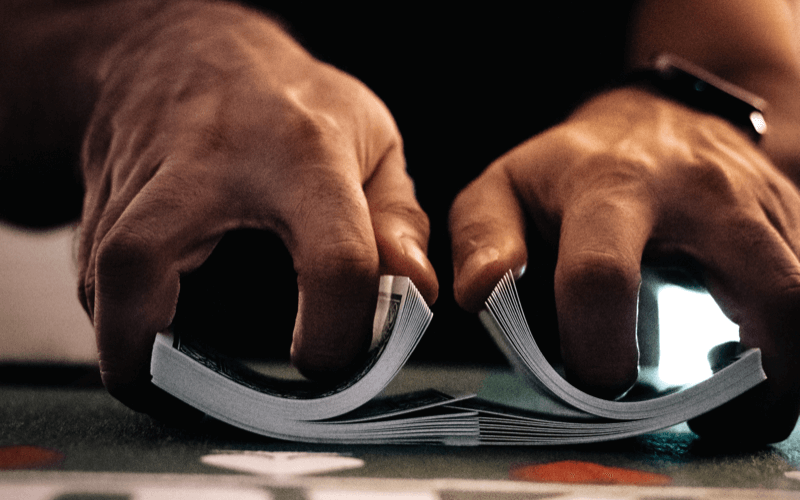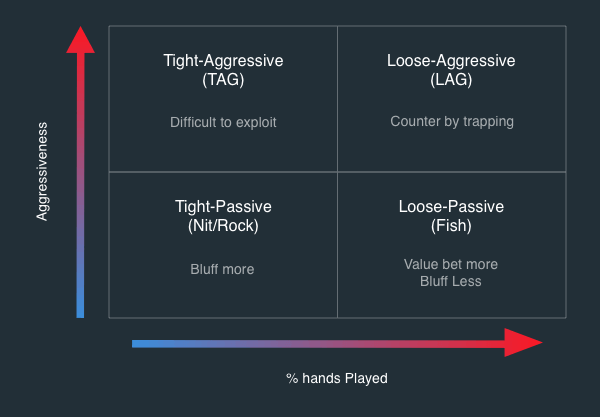|
Contents
Latest Articles
|
What is the Best Poker Playing Style: Aggressive, Passive, Tight, Loose?
Poker is not just a card game, but a game of people played with cards. As you progress through the stages towards poker expertise, you will experience moments when you realize how powerful this statement is.
Different poker players use different poker playing styles such as loose-aggressive (LAG), tight-aggressive (TAG), loose-passive, and tight-passive. While playing online poker, it is important to observe your opponents, determine their playing styles, and adapt your game accordingly. Below we have provided a detailed explanation of each of the four playing styles.
Tight vs. Loose Playing StyleThe first primary factor is shown in a player’s starting hand selection.
Being tight or loose doesn’t necessarily refer to how somebody plays their hand, but merely the selection of hands that they play. The players might play a tight or loose range of hands but what will determine your poker strategy against them is whether they are playing passive or aggressive.
Aggressive vs. Passive Playing StyleA player’s passiveness or aggressiveness is displayed in their risk tolerance.
If you observe your opponents, you will soon start noticing the degree of their playing style.
If an opponent tends to fold most of the hands, they may be playing tight. On the other hand, if an opponent is playing many hands, you can mark them loose.
Similarly, if an opponent calls and checks often, you can mark him/her as passive, and if the opponent bets and raises more, mark him/her as aggressive.
The Four Basic Poker Playing StylesBy assessing these factors, you will typically see four general playing style combinations:
Let’s examine these four basic playing styles in more detail:
The Tight Passive (TP)Tight passive player doesn’t play a lot of pots and often calls pre-flop with a strong hand is a tight-passive player. When such players play tight, the other players often fold. These players are labeled as nit or rock and this style of play is generally considered as weak passive. The players with a tight-passive style of play fold frequently to aggression and are easy to bluff as they play with a fear of losing.
The Loose-Passive (LP)The loose-passive players tend to limp into lots of pots and call raises just to see a flop. These players rarely show aggression in their style of play as their approach lets others take the risk while they watch, and hence they are labeled as fish. Many beginners tend to use this approach as they call often. However, you should avoid bluffing the loose-passive players.
The Tight-Aggressive (TAG)The tight-aggressive players generally play only the best starting hands and don’t play a lot of pots. These players are patient, don’t fear betting, and wait for the best opportunity to use their cards strongly to strike. The TAG players are referred to as the sharks in poker as their playing style is frequently effective irrespective of the betting structure or variant.
The Loose-Aggressive (LAG)The loose-aggressive players often bet on most flops and raise or re-raise a lot of hands pre-flop. Since these players play a wide range of hands, it’s difficult to read them. The highly experienced players who adopt the LAG playing style in No-Limit Hold’em, constantly pressurize their opponent, bluff a lot, and use their chips as weapons. However, players that are at the extreme end of the LAG scale raise without reason and overplay their hands. Exploiting such players can be profitable in the long run.
|
| 793 views Jan-10-2022 |
0
Share
Report
|




